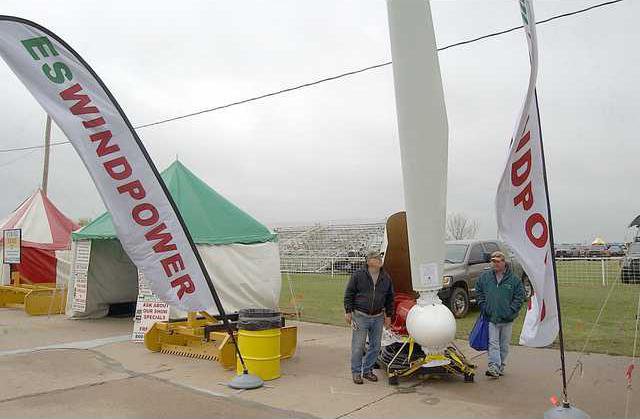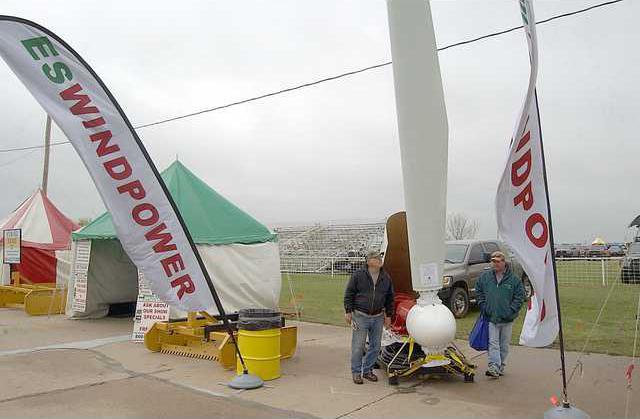It seemed like an odd comment for Rod Stambaugh to make as he stood at his Great Bend Farm and Ranch Expo outdoor booth Thursday afternoon.
“The wind and the cold have people in a hurry-up mode,” he said, lamenting the pace of traffic stopping to look at his displays.
This was odd since Stambaugh manned the ES Group Energy Sciences booth. They make and install private and corporate wind turbines.
A stiff north breeze buffeted the Great Bend Expo Complex Thursday during day two of the first-ever farm show. A light drizzle fell from the gray sky.
The expo closes today. It will be open from 9 a.m. to 4 p.m.
As the flag-like banners reading “ES Wind energy” rippled, Stambaugh told about the advantages of tapping this alternative energy source. “Anyone who uses a decent amount of electricity can justify putting in a turbine.”
His company sells 25 kilowatt wind generators that have a peak capacity of 40 kw. They have a 54-foot rotor and sit atop 80-foot towers.
Houston-based ES Energy has been manufacturing and installing these machines since 1982. Most have gone up in what Stambaugh calls the Wind Belt – Kansas, Iowa, Nebraska and Colorado.
The crank out 13 kilowatt hours of power per month which is about $1,300 worth of electricity. With the net metering laws in Kansas, this excess can either be sold back to the power company at about 3-4 per kwh or it can be applied to a user’s next bill.
“This is the future,” he said. “Wind is very competitive and it makes sense.”
The units sell for $140,000 installed. But, there is a 30-percent Federal Energy Tax Credit (which is worth about $40,000). With this, the money saved on buying electricity and the depreciation of the generator (which could amount to about $40,000), it could pay for itself in three to five years, Stambaugh said.
Most of his customers are large farming operations, but some of his turbines are used for center pivot irrigation systems and other ag/commercial applications.
The tax credit available for such turbines should not be confused with the Production Tax Credit that is used by giant wind farm developers, Stambaugh said. A House bill seeking to extend the existing PTC for wind energy, expires this year and faces an uncertain future.
For exhibitor, the future is blowin in the wind





